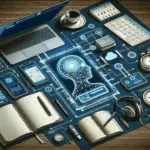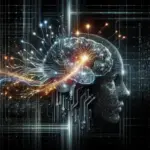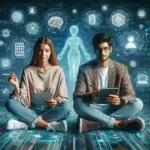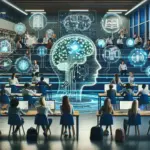The digital landscape has witnessed an extraordinary transformation with the emergence of artificial intelligence for creating images from text. This groundbreaking technology, known as text-to-image generation, has revolutionized how we conceptualize and produce visual content, offering unprecedented creative possibilities for artists, marketers, designers, and content creators worldwide.
Understanding Text-to-Image AI Technology
Text-to-image artificial intelligence represents a sophisticated branch of machine learning that interprets written descriptions and transforms them into corresponding visual representations. This technology utilizes advanced neural networks, particularly diffusion models and generative adversarial networks (GANs), to understand the semantic meaning of text prompts and generate highly detailed, contextually accurate images.
The process begins when users input descriptive text, ranging from simple phrases like “a red sunset over mountains” to complex, detailed scenarios involving multiple elements, lighting conditions, artistic styles, and compositional requirements. The AI system then processes this textual information through multiple layers of neural networks, each contributing to the final image generation process.
The Science Behind Image Generation
Modern text-to-image systems employ several sophisticated methodologies. Diffusion models work by gradually removing noise from random pixel arrangements, guided by the text prompt, until a coherent image emerges. This process mirrors how an artist might sketch rough outlines before adding increasingly fine details.
Meanwhile, transformer architectures help the AI understand the relationships between words in the prompt and their visual counterparts. These systems have been trained on millions of image-text pairs, allowing them to develop an understanding of how language relates to visual concepts, artistic styles, and compositional elements.
Leading Platforms and Technologies
The market for AI image generation has exploded with numerous platforms offering varying capabilities and specializations. DALL-E 2 and its successor DALL-E 3, developed by OpenAI, pioneered mainstream adoption with their ability to create highly detailed, photorealistic images from natural language descriptions.
Midjourney has gained popularity among artists and designers for its exceptional ability to create artistic, stylized images with remarkable aesthetic appeal. The platform excels at interpreting creative prompts and generating images with unique artistic flair.
Stable Diffusion represents an open-source alternative that has democratized access to advanced image generation technology. Its availability for local installation and modification has sparked innovation in the developer community, leading to numerous specialized applications and improvements.
Emerging Technologies and Innovations
Recent developments have introduced ControlNet technology, which allows users to provide additional guidance through sketches, depth maps, or pose references. This advancement bridges the gap between simple text descriptions and precise creative control, enabling more sophisticated image generation workflows.
Inpainting and outpainting capabilities have expanded the utility of these systems, allowing users to modify specific portions of generated images or extend them beyond their original boundaries. These features have proven invaluable for iterative design processes and creative exploration.
Applications Across Industries
The versatility of text-to-image AI has led to adoption across numerous sectors. In marketing and advertising, companies utilize these tools to rapidly prototype visual concepts, create social media content, and develop marketing materials without the traditional time and cost constraints of photoshoots or commissioned artwork.
Entertainment industries have embraced this technology for concept art creation, storyboarding, and visual development. Game developers and filmmakers can quickly visualize scenes, characters, and environments during pre-production phases, significantly accelerating creative workflows.
Educational and Research Applications
Educational institutions have found innovative uses for text-to-image AI in creating custom illustrations for textbooks, generating visual aids for presentations, and helping students visualize complex concepts. Researchers utilize these tools to create diagrams, illustrate theoretical concepts, and produce visual materials for academic publications.
The technology has also proven valuable in architectural visualization, allowing architects and designers to quickly generate concept images of buildings, interiors, and landscapes based on written descriptions of project requirements.
Technical Considerations and Best Practices
Effective utilization of text-to-image AI requires understanding prompt engineering techniques. Detailed descriptions typically yield better results than vague requests. Including information about lighting, composition, artistic style, and specific visual elements helps guide the AI toward desired outcomes.
Iterative refinement represents a crucial aspect of the creative process. Users often generate multiple variations of an image, adjusting prompts based on initial results to achieve their vision. This approach treats AI as a collaborative creative partner rather than a simple tool.
Quality and Resolution Considerations
Modern systems can generate images at increasingly high resolutions, with some platforms supporting outputs suitable for print applications. However, users should consider the intended use case when selecting resolution settings, as higher resolutions require more computational resources and processing time.
Aspect ratio control and composition guidance have become standard features, allowing users to specify whether they need square images for social media, landscape orientations for banners, or portrait formats for specific applications.
Ethical Considerations and Challenges
The rapid advancement of text-to-image AI has raised important ethical questions regarding copyright and intellectual property. Since these systems are trained on vast datasets of existing images, concerns have emerged about potential copyright infringement and the rights of original artists whose work may have influenced the training process.
Deepfake concerns represent another significant challenge, as the technology’s ability to generate realistic images of people raises questions about consent, privacy, and potential misuse for creating misleading or harmful content.
Bias and Representation
Training datasets may contain inherent biases that can be reflected in generated images. Researchers and developers are actively working to address these issues by improving dataset diversity and implementing bias detection and mitigation strategies.
The impact on traditional creative industries has sparked debates about the future role of human artists and designers. While some view AI as a threat to creative employment, others see it as a powerful tool that can augment human creativity and democratize artistic expression.
Future Developments and Trends
The trajectory of text-to-image AI points toward increasingly sophisticated capabilities. Real-time generation is becoming more feasible, potentially enabling interactive creative applications where images update instantly as users modify their prompts.
Multi-modal integration represents an exciting frontier, with systems beginning to incorporate audio, video, and other sensory inputs alongside text descriptions. This evolution could lead to more comprehensive creative tools that understand and generate content across multiple media types.
Personalization and Style Transfer
Future developments may include enhanced personalization features, allowing users to train AI systems on their specific artistic preferences or brand guidelines. This capability would enable consistent visual identity across generated content while maintaining the flexibility of text-based creation.
3D image generation and animated content creation represent emerging areas of development, potentially expanding the technology’s applications into virtual reality, augmented reality, and dynamic media production.
Getting Started with AI Image Generation
For newcomers to text-to-image AI, starting with user-friendly platforms like DALL-E or Midjourney provides an accessible entry point. These services offer intuitive interfaces and extensive documentation to help users understand prompt construction and system capabilities.
Experimentation and learning remain key to mastering these tools. Users benefit from studying successful prompts, understanding how different descriptive elements affect output, and developing their own style of prompt engineering.
The community aspect of many platforms provides valuable learning opportunities, with users sharing techniques, successful prompts, and creative applications. Participating in these communities can accelerate learning and inspire new creative directions.
Integration with Existing Workflows
Professional users often find the greatest value in integrating AI image generation with existing creative workflows. Rather than replacing traditional tools, these systems can serve as ideation engines, reference generators, or starting points for further artistic development.
API integration capabilities allow developers to incorporate text-to-image functionality into custom applications, enabling automated content generation for websites, applications, and digital products.
Conclusion
Text-to-image artificial intelligence represents a paradigm shift in content creation, offering unprecedented accessibility to high-quality visual generation. As the technology continues to evolve, it promises to further democratize creative expression while raising important questions about the future of digital art and design.
The key to success with these tools lies in understanding their capabilities and limitations, developing effective prompt engineering skills, and approaching them as collaborative creative partners rather than simple automation tools. As we move forward, the integration of AI image generation into various industries and creative workflows will likely accelerate, making familiarity with these technologies increasingly valuable for professionals across numerous fields.
Whether used for rapid prototyping, creative exploration, or production-ready content generation, text-to-image AI has established itself as a transformative force in the digital creative landscape, offering exciting possibilities for innovation and artistic expression in the years to come.





Leave a Reply